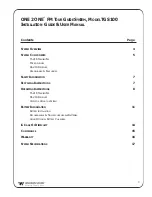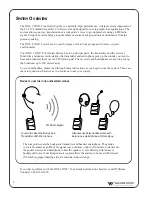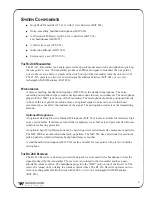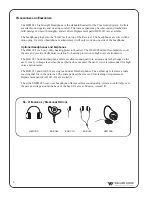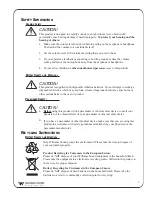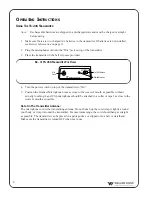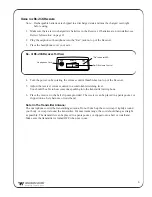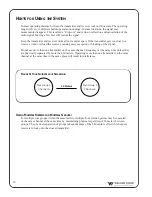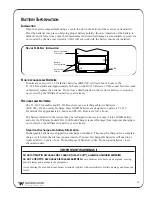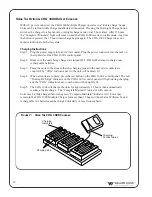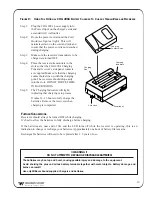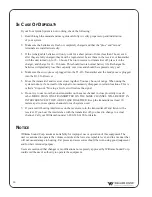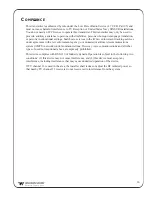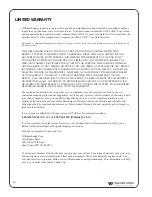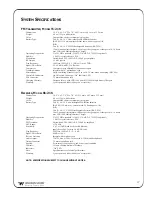
11
B
ATTERY
I
NFORMATION
I
NSTALLATION
Open the battery compartment using a coin in the slot in the bottom of the receiver or transmitter.
Press the batteries into place, observing proper battery polarity. Incorrect insertion of the battery is
difficult, and if forced, may cause both mechanical and electrical damage to transmitters or receivers
not covered by the five year warranty. Units will not work with the battery incorrectly installed.
N
ON
-
RECHARGEABLE
B
ATTERIES
In normal use, two AA 1.5 V alkaline batteries (BAT 001) will last about 8 hours in the
T1-216 Transmitter and approximately 20 hours in the R1-216 Receiver. If the sound becomes weak
or distorted, replace the batteries. Do not leave dead batteries in the receivers. Battery corrosion is
not covered by the Williams Sound five year warranty.
R
ECHARGEABLE
B
ATTERIES
The T1-216 Transmitter and R1-216 Receivers can use rechargeable AA batteries
(BAT 026). On an overnight charge, these NiMH batteries are designed to operate a T1-216
Transmitter for approximately 6 hours, and R1-216 Receivers for 14 hours.
The battery installed in the receiver may be recharged in the receiver only if it is a NiMH battery,
and only if a Williams Sound CHG 1600 Multi-Charger is used. Damage from improper charging is
not covered by the Williams Sound five year warranty.
Important Rechargeable Battery Information
Rechargeable batteries are shipped in a discharged condition. They must be charged for a complete
charge cycle before the first use (approximately 15 hours). Rechargeable batteries will need to be
replaced after 1-2 years of use. Do not dispose of batteries in fire. Do not open batteries - toxic
chemicals inside.
+
–
+
–
Battery
Compartment
Tab
Rear of Transmitter
or Receiver
Note Proper
Polarity
F
IGURE
6: B
ATTERY
I
NSTALLATION
!! IMPORTANT WARNINGS !!
DO NOT ATTEMPT TO RECHARGE ZINC CARBON (“HEAVY DUTY”), ALKALINE, OR LITHIUM BATTERIES!
DO NOT ATTEMPT TO RECHARGE DISPOSABLE BATTERIES!
These batteries may heat up and explode, causing
possible injury and damage to the equipment.
Avoid shorting the plus and minus battery terminals together with metal objects. Battery damage and burns can
result!



